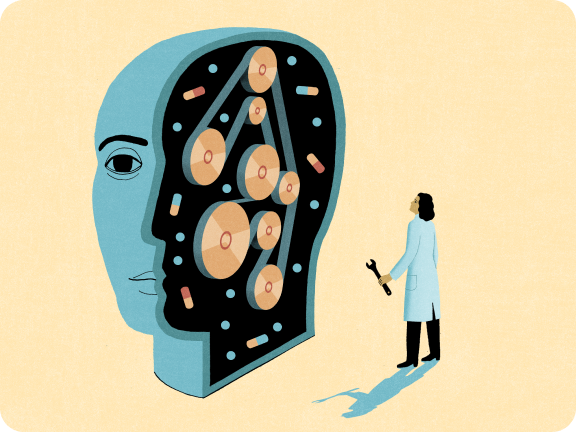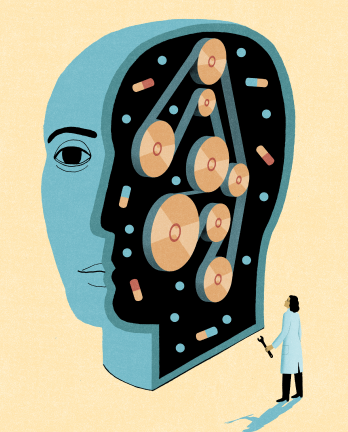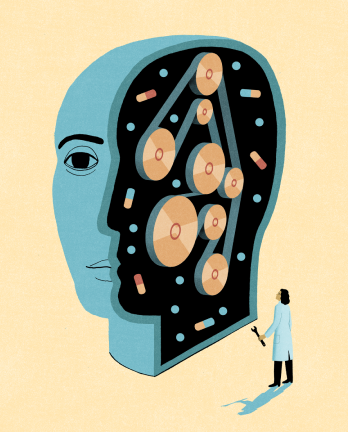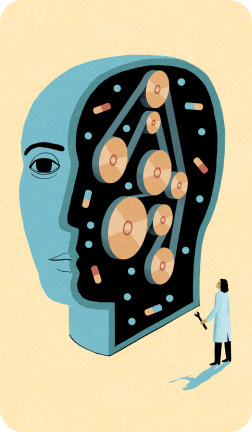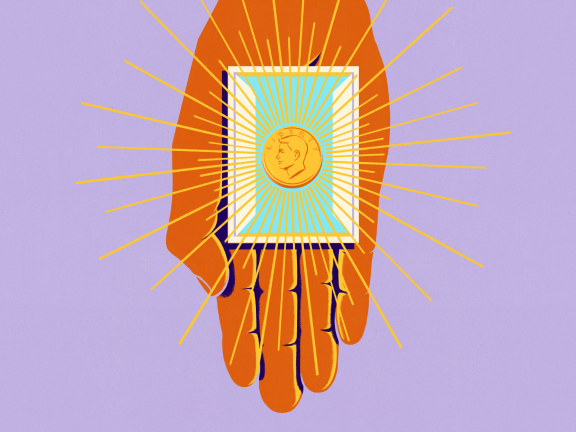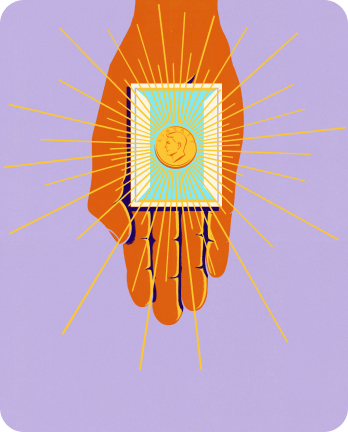Partner Content
This content was paid for by Jefferson Enterprise and created by INQStudio. The news and editorial staffs of The Inquirer had no role in this article’s creation.
This content was paid for by Jefferson Enterprise and created by INQStudio. The news and editorial staffs of The Inquirer had no role in this article’s creation.
Why tempers flare when the heat is on and what we can do about it.
Why tempers flare when the heat is on and
what we can do about it.
Why tempers flare when the heat is on and what we can do about it.
Why tempers flare when the heat is on and what we can do about it.
t’s a hot topic that’s gaining steam: According to science, cooler heads don’t always prevail when temperatures start to heat up. It’s a fact that has serious consequences for a rapidly urbanizing world.
Craig Anderson, who has a doctorate in psychology, has studied violence for more than 40 years and has written over a dozen papers unpacking the link between heat and aggression. Elevated heat stresses our bodies and brains, he says, increasing our likelihood of becoming irritable—and of snapping.
“The direct heat effect can drive irritability without people even recognizing it,” says Anderson. “Their discomfort is changing the way they perceive the world around them and the way they think about problems and problem solving.”
One study conducted by Anderson and his research team explored the effects of direct heat on behavior by having randomly assigned participants view videos of a couple discussing where to eat. In one video, the couple discusses their options casually. In a second video, the couple debates their preferences. And in a third, the couple argues about where they will dine.
The direct heat effect can drive irritability without people even recognizing it. Their discomfort is changing the way they perceive the world around them and the way they think about problems and problem solving.”
Dr. Craig Anderson
psychologist who has studied violence for more than 40 years
The video viewers were asked to rate the level of aggression on display. What they didn’t know was that their own moods were being manipulated—some participants were in comfortable, room-temperature settings, while others had varying degrees of heat added to their climate by researchers.
Anderson’s team had hypothesized that those viewing the videos in hotter environments would claim to perceive more aggression and hostility in the argumentative videos than those in cooler temperatures would. The actual results surprised even the scientists: The viewers in hotter rooms reported observing more hostility not just in the intentionally argumentative videos but in all of them.
When temperatures rise, your brain adapts to maintain its essential functions. Blood vessels in your brain widen to increase blood flow, leading to swelling and inflammation. Your prefrontal cortex, in charge of emotional regulation and decision making, becomes overtaxed, which compromises your impulse control. Meanwhile, you sweat to dissipate heat. This increased metabolic load can lead to fatigue and dehydration, compounding heat’s nerve-fraying effects.
Uneven Consequences
While we may all be susceptible to these effects, not everyone has the luxury to readily keep cool and reduce the potential negative outcome of high temperatures on mood and social relations. Densely populated cities are particularly vulnerable to what is called the heat island effect, in which urban areas experience acutely higher air temperatures than more rural and less densely populated areas.
Lower-income neighborhoods in urban areas are even more likely to experience this phenomenon. “Underserved neighborhoods are typically lacking in green infrastructure,” explains Edgar Stach, a professor of architecture at the College of Architecture and the Built Environment at Thomas Jefferson University and director of its Institute for Smart and Healthy Cities. “They lack parks, trees, and shady coverage on sidewalks. At the same time, the building stock in these areas can be older, with inefficient air conditioning and poorly insulated walls.”
Underserved neighborhoods are typically lacking in green infrastructure. They lack parks, trees, and shady coverage on sidewalks. At the same time, the building stock in these areas can be older, with inefficient air conditioning and poorly insulated walls.”
Edward Stach
architecture professor and director, Institute for Smart and Healthy Cities, Thomas Jefferson University
Urban areas also tend to have a higher proportion of impervious surfaces, such as asphalt and concrete, which absorb and retain more solar radiation during the day, causing an increase in air temperature on the ground.
And heat is a by-product of our very existence: The natural metabolic processes that sustain life emit heat, creating a warm microclimate around our bodies. At scale, this collective “anthropogenic heat” generated by human beings and the things we build exacerbates the localized warming that drives the heat island effect in urban areas. Under the summer sun’s scorching glare, temperatures in urban heat islands can climb up to 20 degrees higher than those in adjacent areas.
Innovations to Reduce Urban Heat
These heat-ravaged communities need relief. “Cities are looking at their green infrastructure, and many want to make improvements,” says Stach.
The good news is that we have been inventive about how to innovate our built environments to cope with heat for millennia. Ancient Egyptian and Persian societies, for example, literally wrangled the breeze with wind catchers—towers affixed to their homes to channel the outside wind into their interior spaces. Some of the earliest of these innovations are credited to the Egyptians of more than 3,000 years ago.
New technologies, some winking at time-tested innovations, are being tried to provide heat relief today. Some municipalities are trying to increase the number of trees and the amount of vegetation in their most affected neighborhoods. This greenery provides heat-reducing shade for building surfaces, deflects harmful radiation from the sun, and releases moisture into the atmosphere—all of which bring temperatures down.
In addition to creating parks and planting trees, some developers are layering green elements onto cities’ built environments by roofing buildings with vegetation instead of traditional materials such as shingles, metal, or tiles. These “green roofs” promote evapotranspiration, the release of water vapor into the air through tiny pores in the plants’ leaves, cooling the surrounding air.
Increasing vegetation in neighborhoods provides heat-reducing shade for building surfaces, deflects harmful radiation from the sun, and releases moisture into the atmosphere—all of which bring temperatures down.
“Cool roofs” are another, more accessible option, thanks to the wide range of roofs this sunlight-reflecting solution can be applied to using specialized reflective coatings and materials. One ultra-white paint developed by U.S.-based mechanical engineers can reflect 98% of the sunlight that strikes it. When used to cover a thousand-square-foot roof, the paint is capable of providing the same cooling power as central air conditioning.
Mahila Housing Trust (MHT), an Indian nonprofit whose goal is to provide heat relief for some of the country’s most vulnerable women, provides residents with white solar-reflective paint to coat their tin roofs. The success of the program has inspired expansion plans, with MHT aiming to facilitate 5,000 more cool roofs across India by 2026.
Some innovators are literally taking it to the streets, reviving roads with “cool pavement” that similarly reflects solar energy. Repaving roads with reflective surfaces offers significant potential for lowering urban temperatures, since up to 45% of the land area in major cities consists of pavement. The city of Phoenix reported in 2021 that their cool pavement experiment lowered average surface temperatures by 2.4 degrees at sunrise and by up to 12 degrees during afternoon hours. Los Angeles, Austin, Sacramento, and Chicago have all launched cool pavement pilots.
And there are more potential solutions to the heat island effect. “[Cities] want to increase the quality of the building stock, renovating old residential buildings with better windows and better roof insulation,” says Stach. He suggests that cities can incentivize such action through grants for building owners to make these updates to their properties.
An Evolving Problem
Heat spikes in urban and other areas are more than just uncomfortable—they have a demonstrated negative impact on our behavior and the way we deal with one another. Even “in…neutral and positive circumstances, hot temperatures cause increases in aggression,” Anderson writes in “Heat and Violence,” one of his papers on the subject.
We need to get our arms around the problem as we all move closer together. More people worldwide live in cities today than ever before, and the proportion of urban dwellers is projected to rise to nearly 70% of the world’s population by the year 2050, up from 55% in 2018.
And heat spikes have been associated with increased aggression and violence not only in real life; a 2022 study showed the negative effect of high temperatures on mood and behavior in the virtual world as well.
“Hate speech online [is] a potential channel through which temperature alters interpersonal conflict and societal aggression,” researchers concluded in 2022 after conducting an empirical analysis of 4 billion geotagged tweets published from May 2014 to May 2021 from nearly 800 U.S. cities. Extreme temperatures drove a 22% increase in hate speech. The surge persisted when researchers controlled for location, income, political beliefs, and religious beliefs and brings even more urgency to our need to step up investment in and implementation of these cooling innovations. The heat is on.
Be Cool
If you’re a homeowner, look into whether your city or town is offering incentives to upgrade your roof. Not only will it make for a more temperate environment for you but it’s also one small way to help the ambient temperature tick down in your neighborhood.
Illustrations by Brian Stauffer

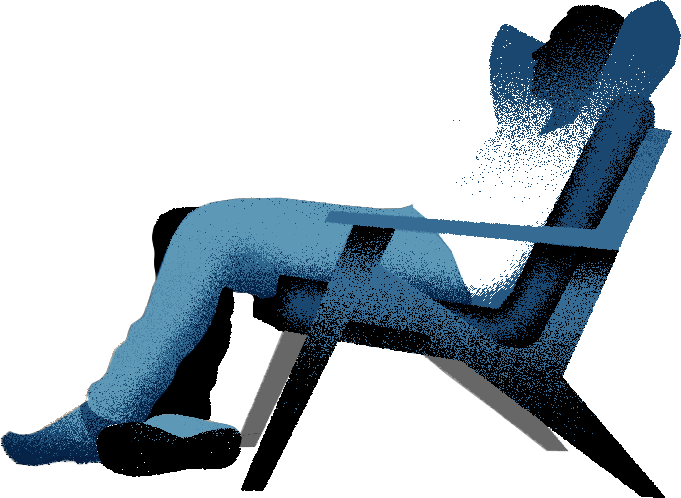
Jared Johnson is a journalist who has worked for the State Gazette and as a contributing writer for the Seattle Times and Pitchfork, among other publications. This content was paid for by Jefferson Enterprise and created by INQStudio. The news and editorial staffs of The Inquirer had no role in this article’s creation.
Home of Sidney Kimmel Medical College




























